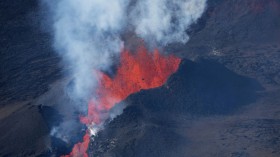A new law in Washington will soon go into effect requiring boats and other vessels to maintain a 1000-yard buffer zone to protect orcas.
People on recreational boats hoping to catch a glimpse of the southern resident orcas will be subject to the new regulations. Whale-watching vessels must be kept 1,000 yards away from endangered orcas according to legislation that Governor Jay Inslee has yet to sign.
Whale Watching and the 1000-Yard Buffer
Officials stress that the distance won't change the reputation of Washington as one of the finest whale-watching destinations in the world.
Sarah Hanke, general manager of Puget Sound Express Tours, said for licensed whale watch vessels like hers, the 1,000-yard buffer specified in Senate Bill 5371 in the Washington State Legislature will not affect operations. Under the current license program, they have already been at a distance of 1,000 yards from orcas since January 2021.
The focus of this legislation, according to Rep. Debra Lekanoff, is on those who harass or harm killer whales or cause them to become distressed.
Recreational vessels have been permitted to observe southern resident killer whales from a distance of 300 yards, so this distance is new to them.
Giving those whales extra space will prevent the underwater noise from interfering with their ability to catch salmon, according to Julie Watson, who leads the Killer Whale Policy for the Washington Department of Fish and Wildlife (WDFW). Recreational fishers may also do this, as many people are out kayaking or on a pleasure cruise.
Protecting Orcas and Other Whales
According to Watson, the species suffered greatly from captures for aquariums in the 1960s and 1970s, and recovery has been sluggish due to the scarcity of salmon, as well as water pollution and underwater noise.
Only 73 resident killer whales remain in the southern waters.
The legislation specifies that the WDFW will implement the vessel setbacks through outreach and by putting up signs at the public boat docks and marinas. Watson added that the female orcas need additional space so they can hunt for food and feed their young.
Also Read: Great White Sharks With No Organs Found in South Africa, Two Orcas Possible Culprit
Those who are unsure can also keep an eye out for whale-watching boats, which frequently serve as sentinels.
Hanke added that a whale warning flag had been erected to let boaters know that whales were present and to advise them to slow down.
Those caught near the orcas will face possible suspension of their operator or business license, according to officials, who suggest that whale-watching tours concentrate on the other species that inhabit the region that they can get closer to, such as the flourishing Biggs Killer Whales, Humpbacks, Gray Whales, and Minke Whales.
Prior to taking effect in January, the bill will return to the Senate for Inslee's signature, KOMO News reports.
Whale-Watching in Washington
There are three main places to go whale watching in Washington, according to the World Whale Watching Guide: Seattle, where gray whales divert from their northern migration to eat the plentiful shrimp population around the Whidbey and Camano Islands from May to March; the San Juan Islands, where orcas normally swim by the west side of San Juan Island from late spring to early autumn; and Bellingham, where family groups of the local salmon-eating orcas and solitary minke whales abound.
Related Article: Humpback Whales Spotted From Hawaii Nearly Reaches 1000
© 2024 NatureWorldNews.com All rights reserved. Do not reproduce without permission.





